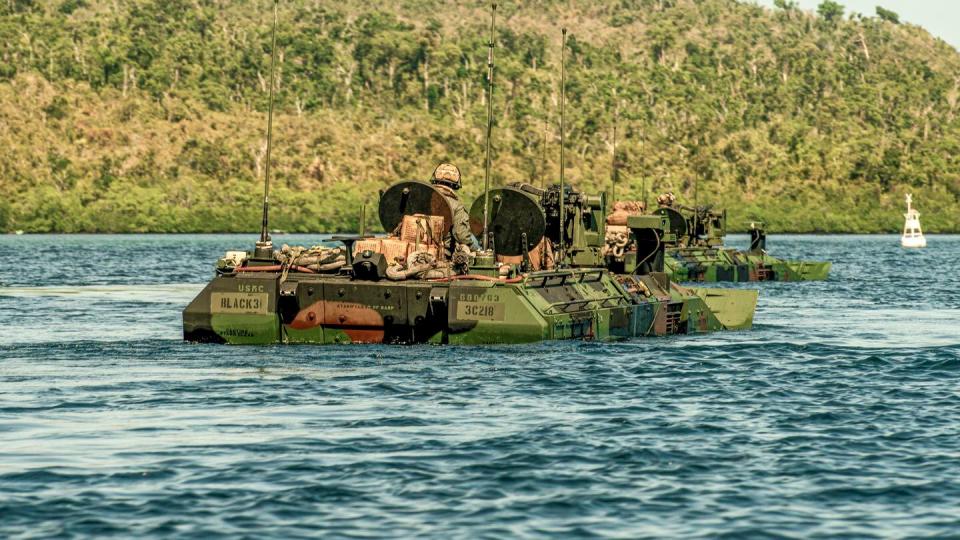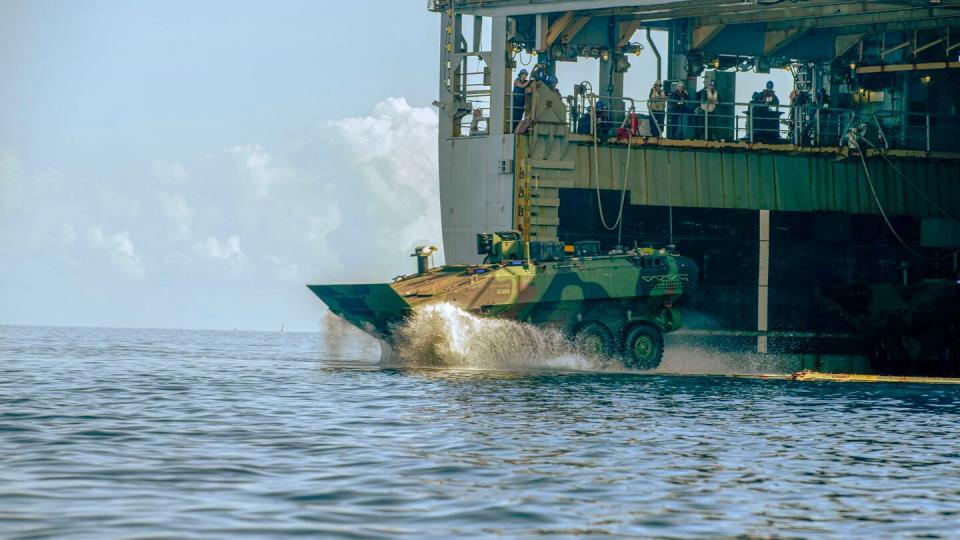The U.S. Marine Corps is monitoring the first deployment of its amphibious combat vehicle to see if these extended operations from a ship yield new lessons on maintaining and operating the vehicle, according to the service’s top program official.
The ACV had its operational debut this month at the Philippines-based Balikatan exercise, during which the 15th Marine Expeditionary Unit’s Amphibious Combat Vehicles Platoon conducted a live-fire, waterborne gunnery range exercise.
After years of tests and fleet-introduction activities that either exclusively or primarily involved the ACV operating and undergoing maintenance from land, Program Executive Officer for Land Systems Stephen Bowdren said, this was the program’s first chance to see how Marines fare in using the vehicle from a ship.
Performing repairs and routine care from the well deck of an amphibious ship “raises a whole other set of challenges for the Marines,” he said during an interview with Defense News at the Modern Day Marine conference this month.
These ship-based operations by 15th MEU reflect “how the vehicles are going to live full time now, whether on this deployment or the next. So we’re going to gain a lot of great information on how that goes.”
The drill also tests “our ability to predict what parts are going to be in demand during normal operations,” Bowdren added, so that his program office can ensure deploying units bring sufficient spares and the logistics system is ready to replenish them.

Lessons on maintenance and sustainment will allow Program Executive Office Land Systems to modify tactics, techniques and procedures for the vehicle, and might inform changes to the platform itself, Bowdren said.
The Corps set up a Readiness Control Board to study lessons learned on maintenance, training, parts and anything else that influences the readiness and availability of the vehicles. Those deemed to be related to the design of the vehicle itself could lead to engineering change proposals that will affect future ACVs coming off BAE Systems’ production line — both for the personnel variant on deployment today and future versions.


The Marine Corps hired BAE Systems to design and build four variants of the vehicle. The personnel and the command-and-control variants are in production. The ACV 30mm cannon variant is in testing, while the ACV recovery vehicle has completed the design and development phase, according to BAE Systems.
Bowdren said the variants have about 80% parts commonality, so depending on the lessons learned from this ongoing deployment, the program office could limit an engineering change to just the personnel variant, or could change the whole class’s production.
Source Agencies


